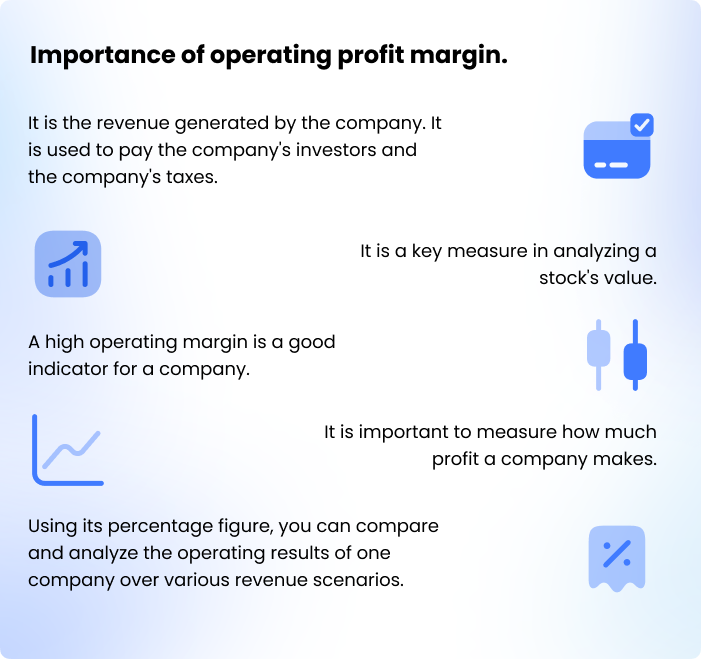What is Operating Profit Margin (OPM)?
In evaluating a business, investors and analysts rely on the operating profit margin. Being a key profitability ratio, it serves as an indicator of the efficiency of a company in managing its expenses. The operating margin shows to an investor, analyst, and even business owners the relationship that exists between revenue and the final profit of the business.
Often, the profit margin is confused with the operating margin. Also, though they share similarities as they both compare earnings against cost. In arriving at the operating profit margin, two components are essential; the revenue and the operating profit.
Operating Profit Margin Formula
Operating profit margin (OPM) = Operating profit / Total Revenue
and,
Operating Profit = Sales – COGS – Operating Expenses – Depreciation and Amortization
Where,
COGS – Cost of Goods Sold
Why is Operating Profit margin is important?

Revenue of the business is often from the primary source, usually the sales of goods and services as displayed on a cloud accounting software. On the other hand, the operating profit is derived from the gross profits after offsetting administrative, overhead and operational expenses.
Both of these figures can be gotten from the balance sheet report of the business. Below is how operating profit margin is calculated;
How to measure operating profit margin?
Through myBooks online accounting software or any other cloud accounting software, the operating profit margin of a business can be calculated. You don’t have to possess accounting or bookkeeping education to calculate the operating profit margin. It can be handled excellently using any online accounting software for small businesses.
If you are still in doubt as to the importance of knowing the operating profit margin of your business, read on. Through this metric, companies can spot room for growth and expansion. Operating profit margin also highlights areas where there are unnecessary expenses, which have to be cut out in the business. It will also unravel other cost-cutting avenues that can help the business maximize profits.
Lastly and most importantly, a company uses the operating profit margin to compare its performance with others in the industry.
How to Improve Operating Profit Margin?
We can improve operating profit by reducing the direct cost associated with business operations. The first step would be to reduce easy savings related to lost or wasted inventory, increase efficiency or procure raw materials at a lower cost. Additionally, other overhead costs or expenses can be optimized to reduce any unnecessary expenses which can reduce operating profit.
Operating Profit / Revenue X 100
The determination of the operational efficiency of a business is through the assessment of changes in the OPM of a business over a period. When a company is experiencing an increase in the operating margin with a corresponding increase in profit and cost. As far as operating profit is concerned, it’s weighed against the industry average. A company that operates at a margin above the industry average or the entire market is considered to be financially efficient and stable. On the other hand, a company floating below the industry average can easily be affected by economic conditions by suffering financial distress.
Just as market indices vary across industries, OPM can never be related or constant among industries. It is important to state that the scale and size of the business have a role to play in operating profit margins. In small businesses like sole proprietorship and partnership, the OPM is expected to be higher. These forms of businesses need to cover the high cost and make a reasonable profit. For large corporations, the high volume of sales makes it bearable when operating at a low operating profit margin.
What is a good operating profit margin?
If the company tends to earn more money from the respective business, which can pay all their business costs by compensating with the profit, then the company tends to have a good OPM. Businesses holding 15% higher operating margins are supposed to be good.
What is a bad operating profit margin?
The companies investing lots of cash on goods manufacturing, or having high overhead costs, tend to reach the negative operating profit. For instant, diverging the negative operating profit of -$30,000 by entire revenue of $300,000 indicates an operating margin of -0.1 or -10%, which is a bad OPM.





